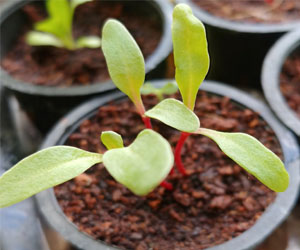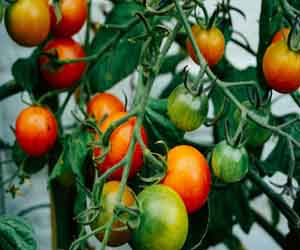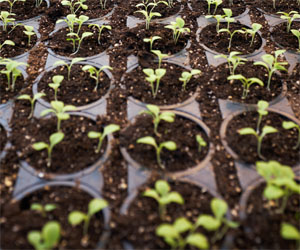


A Cleaner, Safer, And Happier Living Space

A clean home is not only visually appealing but also essential for your health and well-being. However, the methods and products used for cleaning can significantly impact the health of your home and the people living in it. Healthy home cleaning goes beyond aesthetics and emphasizes creating a clean and safe environment for you and your family. In this article, we will explore the importance of healthy home cleaning practices and how to achieve them.
The Importance Of Healthy Home Cleaning
A healthy home is not just about tidiness; it's about ensuring that the environment is free from harmful contaminants and allergens. Here are several reasons why healthy home cleaning is crucial:
Improved Indoor Air Quality: Traditional cleaning products often release volatile organic compounds (VOCs) that can lead to poor indoor air quality. These can cause respiratory problems, allergies, and other health issues.
Allergen Reduction: Effective cleaning methods can help reduce allergens like dust mites, pet dander, and pollen, which can trigger allergies and asthma.
Prevention Of Mold And Mildew: Regular cleaning can help prevent the growth of mold and mildew, which can lead to respiratory problems and other health concerns.
Safer Living Environment: Cleaning without harsh chemicals reduces the risk of skin irritations, chemical exposure, and other health risks associated with chemical cleaning products.
Methods For Achieving Healthy Home Cleaning
Choose Natural And Non-Toxic Cleaners: Opt for natural cleaning solutions or non-toxic cleaning products that are free from harsh chemicals. Vinegar, baking soda, and lemon juice are great natural alternatives for many cleaning tasks.
Regular Cleaning: Establish a consistent cleaning routine to prevent the buildup of dirt, dust, and allergens. Regular dusting and vacuuming can go a long way in maintaining a clean and healthy home.
Ventilation: Ensure proper ventilation during and after cleaning to disperse any airborne particles. Open windows and doors to let fresh air circulate.
Reduce Clutter: A clutter-free home is easier to clean and reduces hiding spots for dust and allergens.
Use High-Quality Cleaning Tools: Invest in high-quality cleaning tools such as microfiber cloths and mop heads, which can effectively capture and remove dirt and dust.
Consider HEPA Filters: If you have respiratory issues or allergies, using a vacuum cleaner with a HEPA filter can help trap small particles and allergens.
Benefits Of A Healthy Home Cleaning Routine
Better Health: A clean and healthy home reduces the risk of allergies, respiratory issues, and skin irritations.
Peace Of Mind: Knowing that your home is a safe and clean environment provides peace of mind and promotes a sense of well-being.
Eco-Friendly: Healthy home cleaning often involves using eco-friendly cleaning products, reducing your environmental footprint.
Improved Quality Of Life: A clean and healthy home leads to a better quality of life for you and your family.
Adopting healthy home cleaning practices is more than just a routine; it's a commitment to the well-being of your family and the environment. By using natural and non-toxic cleaning products and maintaining a regular cleaning schedule, you can create a cleaner, safer, and happier living space. A healthy home is not only aesthetically pleasing but also vital for your physical and emotional health.






Cultivating A Passion For Gardening
 Defining The Green Thumb
Defining The Green Thumb
A "green thumb" is a colloquial term that signifies a person's natural aptitude and success in gardening. Those with green thumbs seem to effortlessly grow thriving plants, lush gardens, and abundant crops. They have a knack for understanding the needs of plants, diagnosing issues, and nurturing them to flourish. Many people believe that this ability is an inborn talent, but the reality is more nuanced.
The Science Of Green Thumbs
While some individuals may have a more intuitive understanding of plants due to their upbringing or exposure to gardening from a young age, the concept of the green thumb is not solely based on genetics.
Exploring Alternative Energy Sources
 Solar Power: Solar energy is one of the most widely recognized and accessible alternative energy sources. It harnesses the sun's energy through photovoltaic cells, converting sunlight into electricity. Solar panels are now a common sight on rooftops and in solar farms, offering a clean and renewable source of power. The technology has become increasingly affordable and efficient, making it a viable option for both residential and commercial use.
Solar Power: Solar energy is one of the most widely recognized and accessible alternative energy sources. It harnesses the sun's energy through photovoltaic cells, converting sunlight into electricity. Solar panels are now a common sight on rooftops and in solar farms, offering a clean and renewable source of power. The technology has become increasingly affordable and efficient, making it a viable option for both residential and commercial use.
Wind Energy: Wind power has also gained significant traction in the alternative energy landscape. Wind turbines convert the kinetic energy of moving air into electricity. Wind farms, often situated in open, windy areas, have become a prominent feature of many countries' energy grids. The scalability of wind power makes it a flexible and promising energy source.
Hydropower: Hydropower, generated from the energy of flowing water, has been a tried and true source of renewable energy for many years. Large dams and smaller hydroelectric plants generate electricity by harnessing the kinetic energy of water. While these projects can have significant environmental impacts, innovations in small-scale, low-impact hydropower systems are being explored.
Geothermal Energy: Geothermal power taps into the Earth's internal heat. It involves drilling wells to access hot water or steam reservoirs below the Earth's surface and using this thermal energy to generate electricity. Geothermal energy is a reliable source of baseload power and is considered highly sustainable.
Maximizing Space, Minimizing Footprint
 Key features of compact living include:
Key features of compact living include:
Efficient Design: Compact living requires meticulous planning and design to make the most of every square inch. Multi-functional furniture, space-saving storage solutions, and flexible layouts are essential elements. This approach maximizes the utility of a space and reduces waste.
Sustainability: Compact living often goes hand-in-hand with sustainability. Smaller living spaces consume fewer resources in construction and maintenance. Reduced energy consumption and water use contribute to a smaller environmental footprint. Many compact homes incorporate eco-friendly materials and energy-efficient systems.
Minimalism: Compact living encourages minimalism, which involves owning fewer possessions and simplifying one's life. The focus is on quality over quantity, with an emphasis on what truly adds value to one's life. This approach can lead to reduced stress, lower costs, and more freedom.
Affordability: Smaller living spaces tend to be more affordable, making homeownership more accessible to a broader range of people. Compact living allows individuals to save money and allocate their resources to other priorities, such as travel, education, or experiences.
Urban Living: Compact living is particularly suited for urban environments, where space is at a premium. It allows people to live close to work, amenities, and cultural attractions. The reduced need for long commutes also contributes to sustainability.
The Power Of Precision Agriculture
 Precision agriculture is an innovative approach to farming that utilizes technology to precisely manage resources and make data-driven decisions throughout the agricultural process. It involves the application of various technologies, including satellite imagery, GPS systems, sensors, and data analytics, to monitor and control the variables affecting crop growth, animal husbandry, and farm operations.
Precision agriculture is an innovative approach to farming that utilizes technology to precisely manage resources and make data-driven decisions throughout the agricultural process. It involves the application of various technologies, including satellite imagery, GPS systems, sensors, and data analytics, to monitor and control the variables affecting crop growth, animal husbandry, and farm operations.
Maximizing Resource Efficiency
One of the primary objectives of precision agriculture is to maximize the efficient use of resources. By collecting and analyzing data on soil health, weather conditions, and crop performance, farmers can make informed decisions regarding irrigation, fertilization, and pest control. This not only results in cost savings but also reduces the environmental impact of farming by minimizing the use of water, energy, and chemicals.
Data-Driven Decision Making
The heart of precision agriculture is data. Farmers collect a wealth of information from various sources, such as drones, sensors, and satellite imagery. This data is then processed and analyzed to provide valuable insights. These insights enable farmers to tailor their actions to the specific needs of their fields, crops, or livestock. For example, sensors can monitor soil moisture levels, helping farmers determine when and where to irrigate, while drones can provide a bird's-eye view of crop health, allowing for targeted interventions.
Enhancing Crop Yield And Quality
Precision agriculture has a direct impact on crop yield and quality. By ensuring that crops receive the precise amount of water, nutrients, and care they need, farmers can significantly increase production. Moreover, by minimizing stressors such as pests and diseases through early detection and targeted treatments, crop quality improves, reducing the need for post-harvest chemicals and additives.
The Art Of Wilderness Living
 Wilderness living is all about embracing the raw and unspoiled natural world. It involves choosing to reside in remote, unpopulated areas, often far from the amenities and comforts of modern civilization. Those who opt for this lifestyle build their homes, forage for food, and harness the elements to survive. It's a challenging yet rewarding way of life that allows individuals to experience a profound sense of freedom, self-sufficiency, and harmony with nature.
Wilderness living is all about embracing the raw and unspoiled natural world. It involves choosing to reside in remote, unpopulated areas, often far from the amenities and comforts of modern civilization. Those who opt for this lifestyle build their homes, forage for food, and harness the elements to survive. It's a challenging yet rewarding way of life that allows individuals to experience a profound sense of freedom, self-sufficiency, and harmony with nature.
One of the fundamental aspects of wilderness living is self-reliance. Those who live in the wild learn to depend on their resourcefulness and creativity to meet their basic needs. Whether it's building shelter from natural materials, hunting, fishing, or foraging for food, these individuals rely on their ingenuity and skills to thrive in a challenging environment.
Living in the wilderness requires adaptability, as nature is unpredictable. The ability to respond to changing conditions, from weather patterns to the availability of food sources, is crucial for survival. Wilderness dwellers must be in tune with the rhythms of the natural world, adapting and learning as they go.
Ensuring Safe And Sustainable Water Supply
 Rainwater is naturally soft and low in mineral content, making it an appealing alternative water source. In areas where access to clean, safe drinking water is limited, treating rainwater can provide a reliable supply. Additionally, rainwater treatment supports sustainable water management practices by reducing the burden on traditional water sources.
Rainwater is naturally soft and low in mineral content, making it an appealing alternative water source. In areas where access to clean, safe drinking water is limited, treating rainwater can provide a reliable supply. Additionally, rainwater treatment supports sustainable water management practices by reducing the burden on traditional water sources.
The Rainwater Treatment Process
Filtration: The first step in rainwater treatment is filtration. This process involves the removal of physical impurities such as leaves, twigs, and debris. Mesh screens and sediment filters are commonly used for this purpose.
Storage: Rainwater is often collected in storage tanks or cisterns. Proper storage is essential to prevent the growth of algae and the contamination of the water by external factors.
Settling: Allowing the collected rainwater to settle can help separate fine particles and sediments that may have passed through the filtration process. This is especially important for improving water quality.
Chemical Treatment: To disinfect rainwater and eliminate pathogens, chemical treatments are employed. Chlorine or ultraviolet (UV) light can effectively kill bacteria and viruses, ensuring safe water for drinking and household use.
Carbon Filtration: Activated carbon filters can be used to remove organic compounds, odors, and residual chemicals from rainwater, enhancing its taste and quality.
A Small Step Toward A Sustainable Future
 Sustainable Ingredients: Planet-conscious cleaning products use sustainable, biodegradable ingredients that break down naturally without harming ecosystems. This reduces the impact on waterways, marine life, and overall environmental health.
Sustainable Ingredients: Planet-conscious cleaning products use sustainable, biodegradable ingredients that break down naturally without harming ecosystems. This reduces the impact on waterways, marine life, and overall environmental health.
Conservation Of Resources: By choosing eco-friendly cleaning practices, we can reduce water and energy consumption. This is crucial for conserving precious resources and reducing our carbon footprint.
Effective Planet-Conscious Cleaning Practices
Eco-Friendly Cleaning Products: Seek out cleaning products that have earned eco-friendly certifications, like the "EcoLogo" or "Green Seal." These certifications ensure that the products meet rigorous environmental and health standards.
Homemade Cleaning Solutions: Making your own cleaning solutions from ingredients like vinegar, baking soda, lemon juice, and essential oils is an excellent way to embrace planet-conscious cleaning. These natural components are effective for various cleaning tasks and are safe for your health and the environment.
Reusable Cleaning Tools: Invest in high-quality reusable cleaning tools such as microfiber cloths, mop heads, and scrubbing brushes. These tools efficiently capture dirt and dust, reducing the need for disposable cleaning supplies and cutting down on waste.
Energy-Efficient Cleaning Appliances: Choose energy-efficient cleaning appliances, such as vacuum cleaners and steam cleaners, to reduce energy consumption while maintaining effective cleaning power.